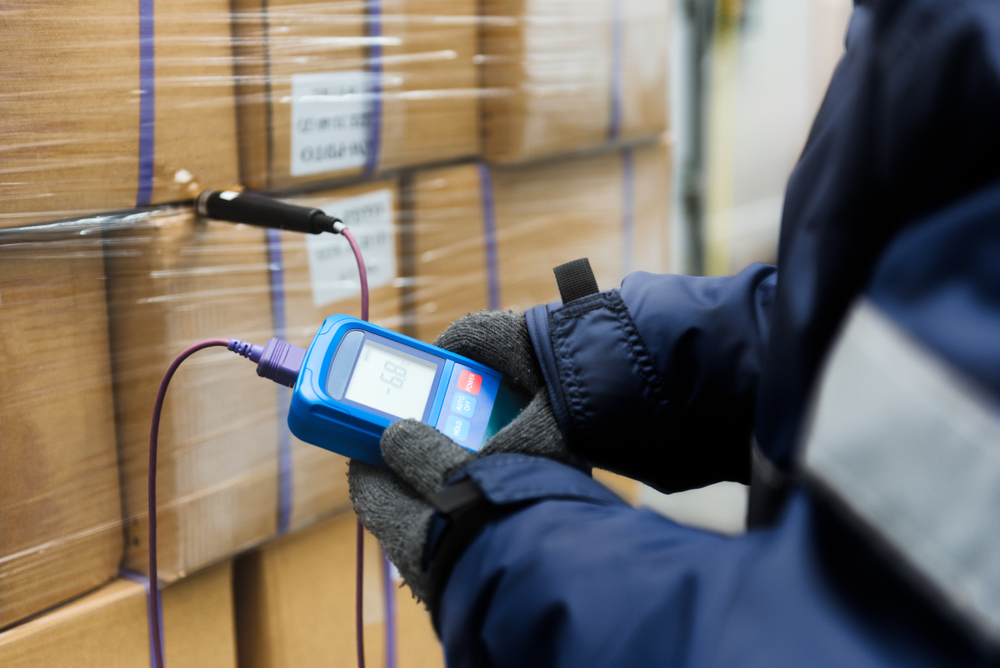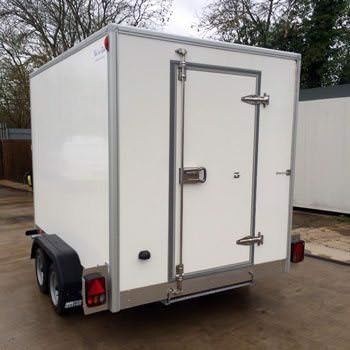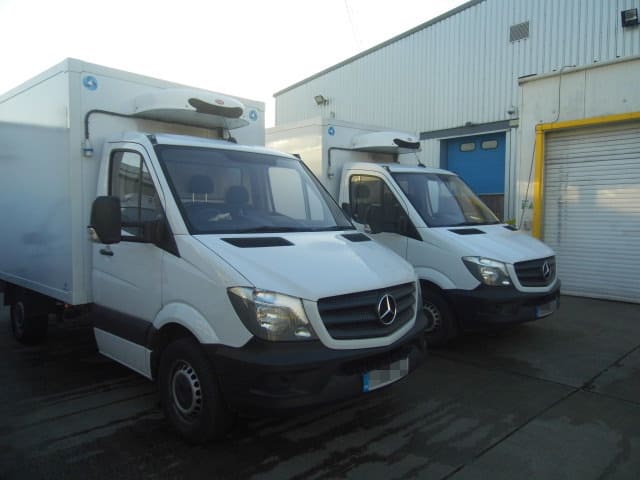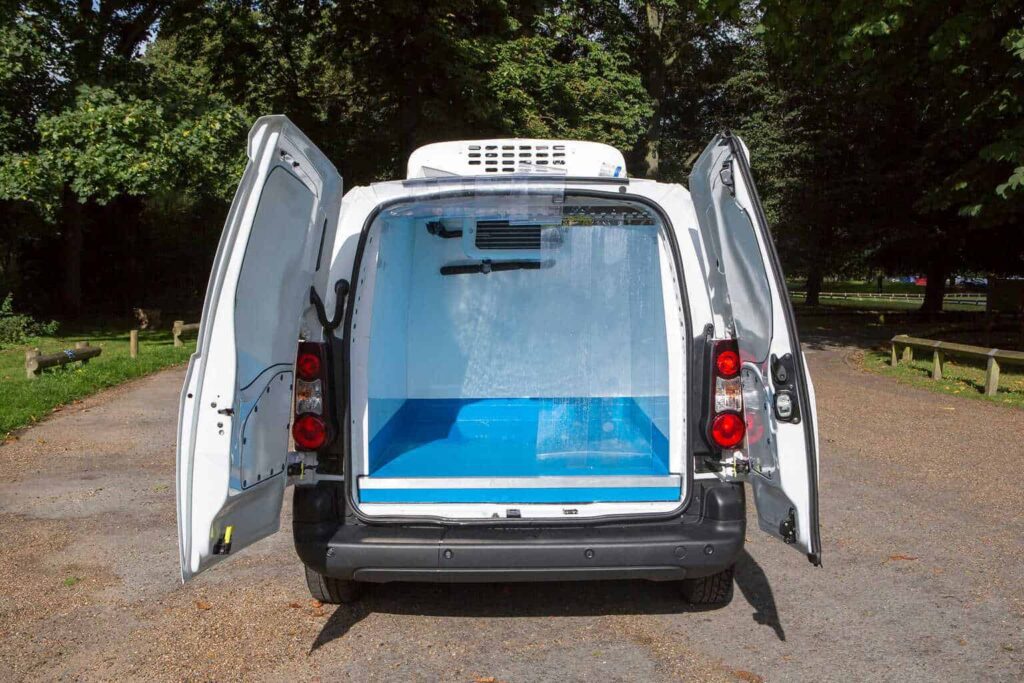Embarking on the journey of starting a cold food and drink delivery service is an exciting venture, especially in the current UK market. With increasing demand for fresh and chilled products delivered to doorsteps, this guide aims to navigate you through the essentials of setting up your cold food delivery service.
From understanding the nuances of food hygiene regulations to selecting the perfect refrigerated van, each aspect of your business will be meticulously covered to ensure a successful launch and sustainable growth.
Types of Cold Food Delivery Services
In the UK, cold food delivery services encompass a range of options. You might consider starting a service that caters to niche gourmet products, such as artisanal cheeses and charcuterie, or opt for a broader approach, including fresh produce, dairy, and meat.
Alternatively, speciality services like pharmaceutical deliveries, which require stringent temperature control, might be your focus. Each type has its own set of logistical and marketing challenges, and understanding these nuances is key to identifying your niche in this competitive market. Here are a few examples:
- Meat and Poultry Deliveries
- Requires strict temperature control to prevent bacterial growth.
- Compliance with FSA (Food Standards Agency) regulations.
- Often needs quick delivery to maintain freshness.
- Seafood Deliveries
- Requires very low temperatures, often near freezing.
- Speedy delivery is crucial to prevent spoilage.
- Special packaging to retain moisture and prevent contamination.
- Dairy Product Deliveries
- Constant refrigeration to maintain quality.
- Delicate handling due to spoilage risk.
- Compliance with specific dairy product regulations.
- Fresh Produce Deliveries
- Variable temperature control depending on the type of produce.
- Ventilation to prevent ethylene build-up.
- Gentle handling to prevent bruising.
- Frozen Food Deliveries
- Requires deep-freeze conditions.
- Insulated vehicles to maintain consistent temperatures.
- Rapid delivery from warehouse to customer to prevent thawing.
- Sandwich Deliveries
- Cool, but not freezing temperatures.
- Short delivery windows to maintain freshness.
- Packaging that maintains humidity levels to prevent sogginess.
- Bakery Item Deliveries
- Moderate temperature control to maintain freshness.
- Careful handling to prevent damage to delicate items.
- Packaging that prevents moisture build-up.
- Pharmaceutical Deliveries
- Strict temperature control as per medicine requirements.
- Secure and tamper-proof transportation.
- Compliance with healthcare regulations.
- Event Catering Deliveries
- Large-scale transportation capabilities.
- Ability to maintain varied temperatures for different foods.
- Quick loading and unloading capabilities for event efficiency.
- Beverage Deliveries (Alcoholic and Non-Alcoholic)
- Temperature control to maintain quality, especially for wines.
- Secure storage during transit.
- Handling requirements vary depending on the type of beverage.
Understanding Food Hygiene and Handling Regulations
Navigating food hygiene and handling regulations is a critical aspect of your business. In the UK, the Food Standards Agency (FSA) sets out the guidelines which must be adhered to.
This includes ensuring proper refrigeration during transport to prevent foodborne illnesses and maintaining cleanliness standards. Different industries, like meat, dairy, and pharmaceuticals, have their specific regulations, making it imperative to have a thorough understanding of these requirements to ensure compliance and maintain the highest standards of food safety.
Finding Information about Food Standards and Regulations for Transporting Refrigerated Goods
For anyone venturing into the business of transporting refrigerated food and drink in the UK, staying informed about the relevant food standards and regulations is crucial. These regulations are designed to ensure the safety and quality of food and drink products during transportation. Here’s where you can find the necessary information:
- Food Standards Agency (FSA)
- The FSA is the primary governing body for food safety in the UK.
- Their website (www.food.gov.uk) provides comprehensive guidelines and resources on food safety, hygiene, and the regulations that businesses must comply with.
- They offer specific guidance on the transport of food, including temperature control requirements, hygiene practices, and documentation.
- Department for Environment, Food & Rural Affairs (DEFRA)
- DEFRA offers guidance on broader aspects of food transport, including environmental and rural affairs.
- They provide information on the legal requirements for food businesses which can be accessed through their website (www.gov.uk/government/organisations/department-for-environment-food-rural-affairs ).
- Health and Safety Executive (HSE)
- While HSE focuses more on the health and safety aspects of work environments, their guidelines (www.hse.gov.uk) can be valuable in understanding how to manage the risks associated with transporting refrigerated goods.
- Chartered Institute of Environmental Health (CIEH)
- CIEH offers resources and training materials (www.cieh.org) that can help businesses understand and implement effective food safety management systems.
- British Retail Consortium (BRC)
- BRC sets out standards for best practices in the supply chain, including transportation of refrigerated goods. Their guidelines are often used as a benchmark for quality and safety in the food industry (www.brcgs.com).
- Local Authorities
- Local council websites often have specific information and resources tailored to businesses operating in their region.
- They can provide local regulations and guidance, as well as contacts for local environmental health officers who can offer advice and conduct inspections.
- Trade Associations and Industry Groups
- Associations like the Food Storage & Distribution Federation (FSDF) and the Road Haulage Association (RHA) offer industry-specific advice, updates on regulations, and networking opportunities.
- Online Forums and Industry Publications
- Platforms like The Grocer, Food Manufacture, and Transport Engineer offer up-to-date news, articles, and discussions on industry trends and regulations.
- Legal Advisors Specialising in Food and Transport Law
- For specific legal advice or to ensure compliance with complex regulations, consulting legal experts in food and transport law is advisable.
- Continued Professional Development (CPD) Courses
- Engaging in CPD courses related to food safety and transport can provide in-depth knowledge and keep you updated with the latest regulations and best practices.
By regularly consulting these sources, businesses can stay informed about current regulations and best practices, ensuring their operations comply with UK standards for transporting refrigerated food and drink.
Identifying Your Customers
Your customer base will largely depend on the type of service you choose to provide. This could range from local restaurants and cafes requiring fresh produce, to corporate clients needing catering services, or direct-to-consumer models like subscription-based meal deliveries. Understanding your target market’s specific needs and preferences is vital in tailoring your services and building a loyal customer base.
- Understand Your Target Market: Begin by defining your target audience. Are you catering to businesses (B2B), like restaurants and retailers, or directly to consumers (B2C)? Understand their specific needs, preferences, and buying habits. For instance, businesses may prioritise reliability and cost, while consumers might focus on product quality and delivery speed.
- Analyse Competitors: Conduct a thorough analysis of your competitors. Look at their service offerings, pricing, market positioning, and customer feedback. Identify gaps in their services where your business could excel. Use tools like SWOT analysis (Strengths, Weaknesses, Opportunities, Threats) to understand where you stand in comparison to them.
- Utilise Online Tools and Resources: Leverage online tools and resources for market analysis. This includes social media analytics, Google Trends, and industry reports. These tools can provide insights into consumer trends, popular products, and emerging market needs. Online surveys and questionnaires can also be used to gather direct feedback from potential customers.
- Engage with Industry Experts and Trade Associations: Connect with industry experts, trade associations, and local business groups. They can offer valuable insights into industry standards, emerging trends, and regulatory changes. Networking with these groups can also provide opportunities for partnerships and collaborations.
- Conduct Field Research: Nothing beats the insights gained from on-the-ground research. Visit potential delivery areas, observe operations of similar businesses, and talk to potential customers and businesses in person. This direct approach can provide practical insights into the operational challenges and customer expectations specific to the locations you plan to serve.
Remember, market research is an ongoing process. Regularly updating your research will help you stay ahead of trends, adapt to changing market demands, and make informed decisions for your refrigerated food and drink delivery business.
Delivery Scope: Local or National
Deciding whether to deliver locally or expand your services nationally will significantly impact your operational model. Local deliveries might focus on building a strong community presence and offering personalised services, while national deliveries require a robust logistics framework, wider marketing strategies, and potentially, a larger fleet of refrigerated vans.
Training Drivers
Driver training is not just about navigation and delivery efficiency. It includes educating them on the importance of maintaining the cold chain, handling perishables, and understanding the technology used in refrigerated vans. Training in customer service and basic emergency response is also essential, as drivers are the face of your service to the clients.
Streamlining with Technology
Incorporating technology like telematics for vehicle tracking and efficient routing, as well as accident management systems, is crucial for operational efficiency. These technologies aid in maintaining the cold chain integrity, ensuring timely deliveries, and reducing operational risks. Additionally, integrating a robust order and delivery tracking system enhances customer satisfaction and loyalty.
Marketing Your Service
Effective marketing is key to establishing your presence in the market. This involves a mix of digital marketing strategies, including SEO-optimised content, social media engagement, and email marketing, alongside traditional methods like local advertising and partnerships. Understanding your audience and tailoring your marketing message to resonate with them is crucial for building brand recognition.
- Leverage Digital Marketing: Embrace digital marketing strategies to reach a wider audience. Utilise social media platforms to engage with customers, share updates and promote your services. Create a user-friendly website with clear information about your services, pricing, and delivery areas. Employ SEO (Search Engine Optimisation) tactics to improve your online visibility and attract organic traffic.
- Focus on Local SEO: If your business targets local customers, local SEO is crucial. Ensure your business is listed in online local business directories and Google My Business. Use location-based keywords in your online content. This helps in appearing in local search results, making it easier for nearby customers to find your services.
- Develop a Strong Brand Identity: Create a distinctive brand identity that resonates with your target audience. This includes a memorable logo, a consistent colour scheme, and a unique selling proposition (USP). Your branding should reflect the quality and reliability of your service, and differentiate you from competitors.
- Utilise Customer Testimonials and Case Studies: Customer testimonials and case studies are powerful tools for building trust and credibility. Showcase positive reviews and detailed case studies on your website and social media. This provides prospective customers with real-life examples of your service’s reliability and quality.
- Offer Promotions and Partnerships: Introduce promotional offers to attract new customers and retain existing ones. This could include discounts on first-time orders or loyalty rewards for regular clients. Additionally, consider partnering with local businesses, events, or food fairs. These partnerships can provide mutual benefits in terms of marketing and expanding customer bases.
Effective marketing is about understanding and connecting with your target audience. Tailor your strategies to meet their specific needs and preferences, and continuously seek feedback to refine your marketing approach.
Choosing the Right Refrigerated Van
Selecting the right refrigerated van involves considering size, refrigeration system, and interior design. Factors like the type of products you’re delivering, the volume of goods, delivery distance, and loading efficiency all play a role in determining the best fit for your business. The van must meet the required temperature controls and have a layout that maximises space utilisation and product safety during transit.
Check out: THE FRIDGEXPRESS GUIDE TO TEMPERATURE-CONTROLLED VANS
Costs of Buying a Refrigerated Van
Purchasing a refrigerated van outright is a significant investment. Costs vary based on the van’s size, refrigeration capabilities, and additional features like shelving and telematics systems. It’s essential to consider the total cost of ownership, which includes maintenance, servicing, and potential resale value.
Benefits of Long-Term Hire/Lease
Long-term hire or lease arrangements offer numerous benefits, including reduced upfront costs, free maintenance and servicing, and the flexibility to upgrade as your business grows. These arrangements often come with comprehensive support services, making them a cost-effective option for many startups.
Partnering with FridgeXpress
Working with FridgeXpress provides a range of advantages for your cold food delivery service. With over 20 years of experience, FridgeXpress offers reduced costs, a wide range of refrigerated vehicles suited for different industries, and UK-wide reach. Their expertise in this field ensures that you have the best vehicles equipped with the latest technology, alongside unparalleled customer support.




